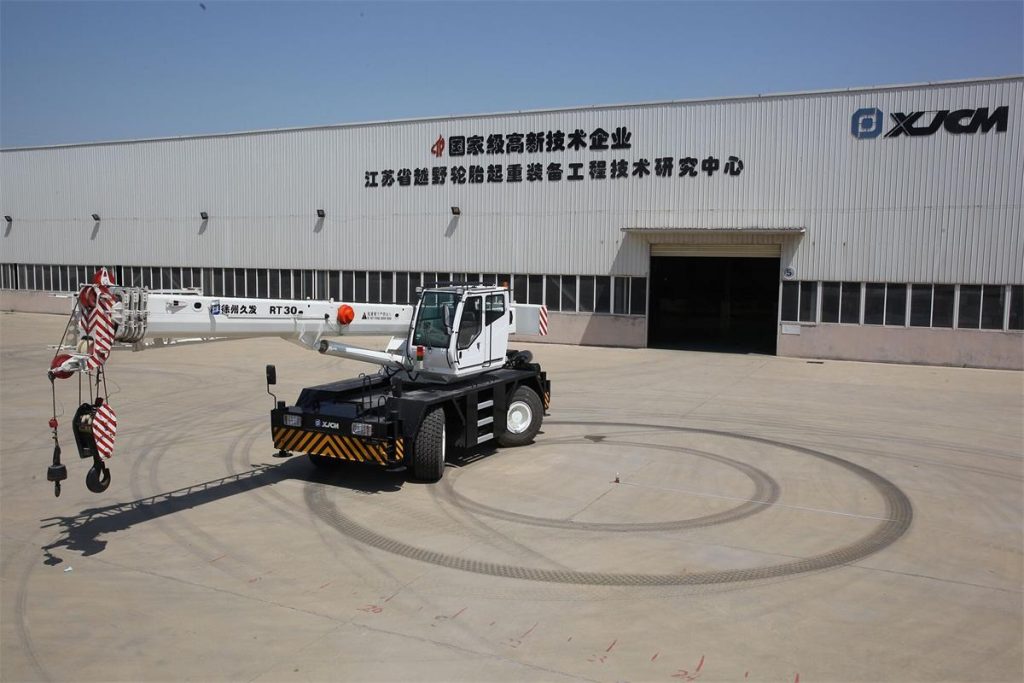General safety operation requirements for crane drivers
First, the relevant personnel should carefully hand over the shift, carefully check the reliability of hooks, wire ropes, brakes, and safety protection devices, and report any abnormal situations in time.
Second, before starting the operation, you should confirm that the following conditions are in a safe state before starting the machine:
(1) Whether all controllers are set to zero;
(2) Whether there are irrelevant personnel on the crane and in the working area, and whether the operators are evacuated to the safe area;
(3) Are there any unremoved obstacles within the crane operating range?
(4) Whether the minimum distance between the crane and other equipment or fixed buildings is more than 0.5m;
(5) Whether the power circuit breaker is locked or has a warning sign;
(6) Whether the mobile crane has leveled the site as required and laid the outriggers firmly and reliably.
Third, before driving, the bell or warning must be rang; when approaching people during operation, intermittent bells or warnings should be given.
Fourth, drivers are not allowed to do the following during normal operation:
(1) Use the permission position limiter to park;
(2) Use the reverse vehicle to brake;
(3) Inspection and maintenance during the lifting operation;
(4) Adjust the brakes of the hoisting and luffing mechanisms with load, or increase the operating range with load;
(5) Hanging objects shall not pass over people’s heads, and people shall not stand under the hanging objects and booms.
Fifth, operate in strict accordance with the command signal, and the emergency stop signal, no matter who issues it, must be executed immediately.
Sixth, when the hoisting load is close to or reaches the rated value, or when hoisting dangerous goods (liquid metal, harmful substances, inflammable and explosive substances), carefully check the brake before hoisting, and test the hoisting with a small height and short stroke, after confirming that there is no problem Lift again.
Seventh, the minimum distance between each part of the crane, lifting load and auxiliary equipment and the transmission line should meet the safety requirements;
Eighth, the driver should not operate in the following situations:

(1) Crane structure or parts (such as hooks, wire ropes, brakes, safety protection devices, etc.) have defects and damages that affect safe work;
(2) The hanging object is overloaded or may be overloaded, the weight of the hanging object is unclear, it is buried or frozen in the ground, and it is squeezed by other objects, and it is not allowed to slant it during operation;
(3) The hanging object is not firmly tied or hanging unstable, and there is no padding between the corners of the heavy object and the sling; there are people or floating objects on the hanging object;
(4) The work site is dark, and the site, hanging objects or command signals cannot be clearly seen.
Ninth, when there is a sudden power failure during work, all controllers should be reset to zero, and the main power supply should be turned off. Before restarting work, check whether the crane works normally, and then operate normally after confirming safety.
Tenth, if there are two sets of main and auxiliary hoisting mechanisms, it is not allowed to use the main and auxiliary hooks to work at the same time (special cranes allowed by the design go out).
Eleventh, when two or more cranes are used to lift the same heavy object, each crane shall not be overloaded. During the transfer process, the wire rope should be kept vertical and the operation should be synchronized. When hoisting, relevant responsible technicians and safety technicians should be present for guidance.
Twelfth, rail cranes operating in the open air should stop working when the wind force is greater than level 6; when the work is over, the cranes should be anchored.



